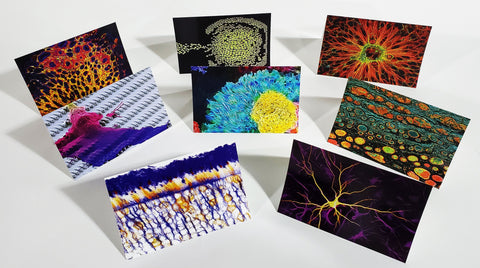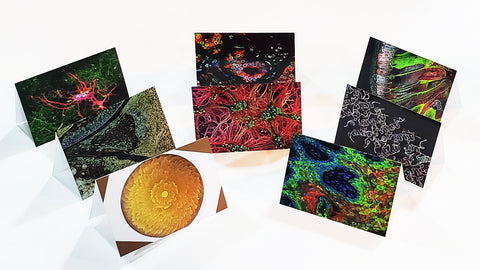




Greggory Myers, Graduate Student, Cell and Developmental Biology (Khoriaty Laboratory), Department of Internal Medicine, University of Michigan Medical School
The bone marrow produces ~ 200 billion red blood cells per day in an adult human. This image illustrates several of the morphological stages that these cells go through, during their development from immature precursors (erythroblasts) to mature oxygen-carrying cells (erythrocytes). The cells are arranged artificially in a bowl-like shape. Erythroblasts (center of the image), have a large nucleus (light green). These precursors divide actively to produce the huge number of cells necessary to sustain the red cell population. As the daughter cells divide further and begin to mature, they begin to lose their intracellular organelles, giving rise to progressively smaller daughter cells, seen here radiating out from the center. The smaller, more mature cells will then condense their nucleus (cells making up the bowl proper). Before leaving the bone marrow, they eject their nucleus altogether; the lack of nuclei and organelles allows these cells to be very flexible as they squeeze through tiny capillaries.
20-072



